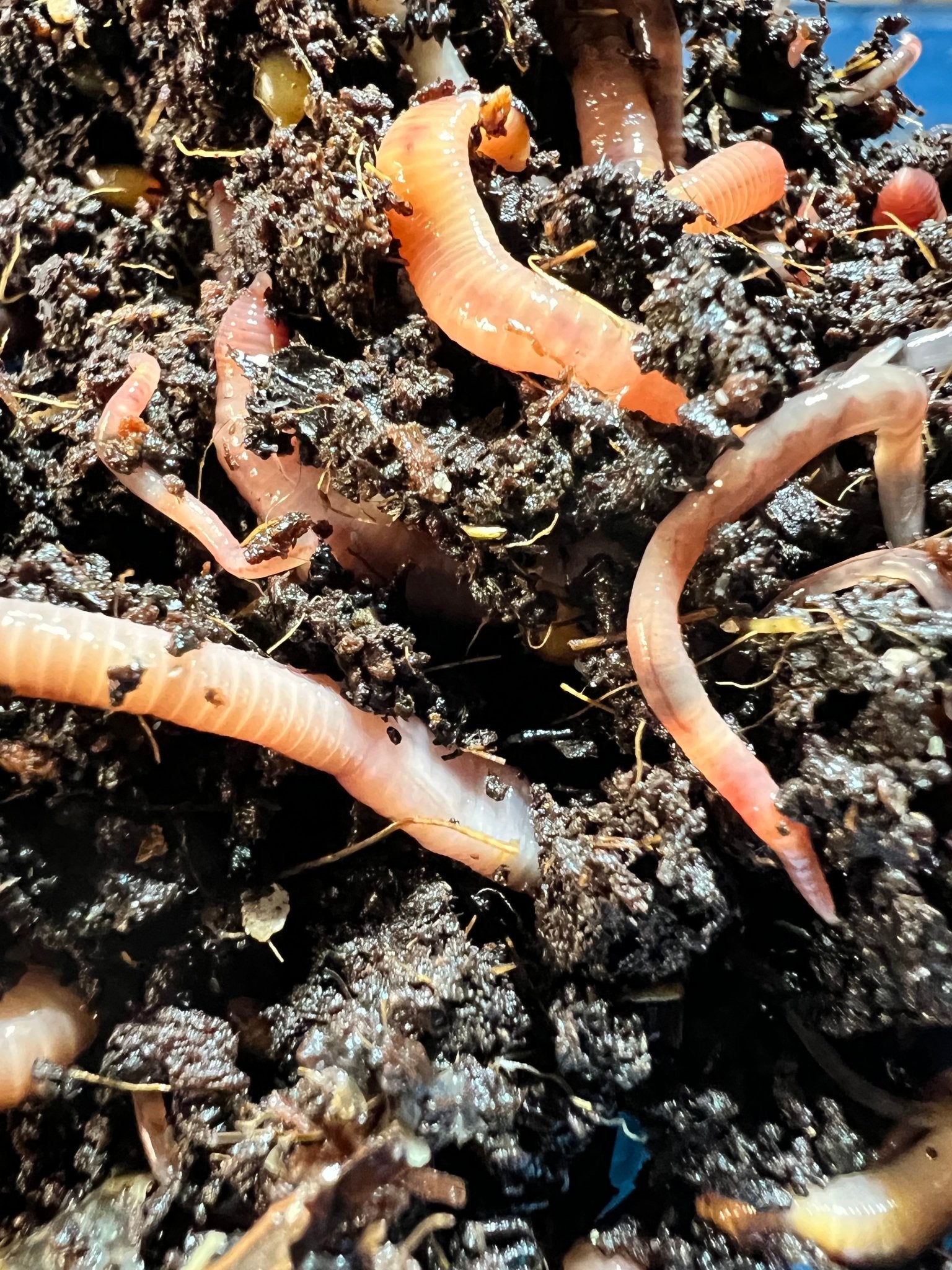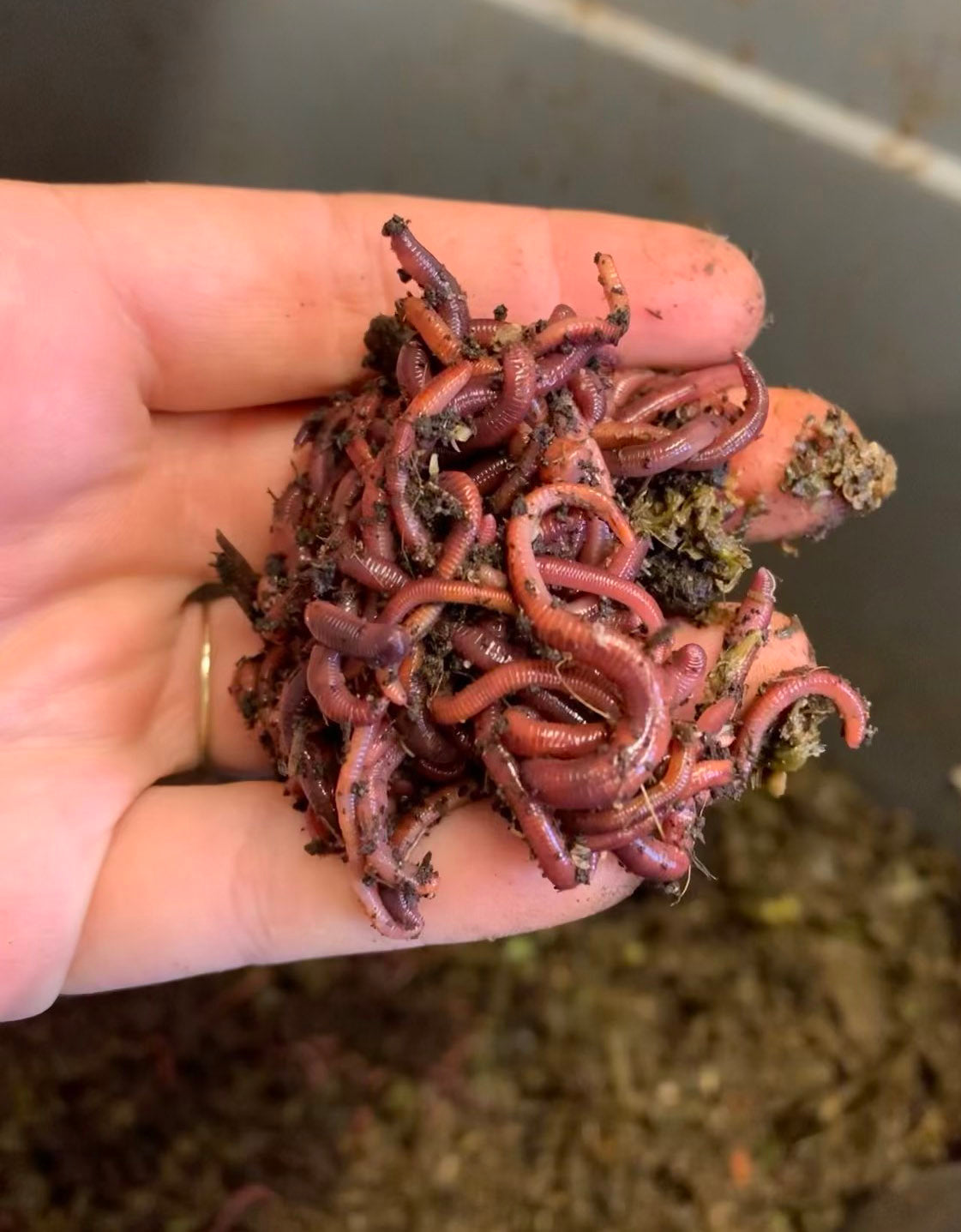The Secret to Lush Lawns Starts with Red Wiggler Express Lawn Care Services
The Secret to Lush Lawns Starts with Red Wiggler Express Lawn Care Services
Blog Article
Unlock the Tricks of Red Wigglers: Your Overview to Composting Success
The combination of red wigglers right into composting methods provides a significant possibility for improving dirt health and wellness and advertising sustainability. These organisms are not simply effective recyclers of natural waste; they use a myriad of advantages that can transform garden management. Understanding their needs and behaviors is important for enhancing their potential, from setting up an appropriate worm container to feeding them the ideal materials. As we discover the crucial parts of effective vermicomposting, one may wonder how these tiny creatures can result in a much more dynamic and productive yard environment.

What Are Red Wigglers?
(Red Wiggler Express)Red wigglers, clinically known as Eisenia fetida, are a varieties of earthworm largely made use of in composting because of their remarkable capacity to break down raw material successfully. These worms are defined by their reddish-brown coloration and a segmented body, normally measuring in between 3 to 4 inches in length. Unlike various other earthworm varieties, red wigglers flourish in abundant, organic environments, making them excellent for vermicomposting systems.
Native to The United States And copyright, they are frequently located in decaying leaves and compost heap, where they play a vital duty in nutrient recycling. Their adaptation to residing in a wet, aerobic atmosphere allows them to consume big quantities of natural waste, simplifying into nutrient-rich castings that improve dirt health.
Red wigglers replicate swiftly, with a solitary worm with the ability of producing a number of cocoons weekly, each containing multiple hatchlings. This fast recreation price adds to their efficiency in composting procedures. They choose temperatures between 60 ° F and 80 ° F, and their activity level boosts significantly within this variety, more aiding in the decomposition process. Comprehending the biology and habits of red wigglers is crucial for maximizing their potential in composting applications.
Benefits of Utilizing Red Wigglers
Taking advantage of the power of red wigglers in composting uses many benefits that improve soil health and promote lasting waste monitoring. These exceptional microorganisms effectively break down organic issue, changing kitchen area scraps and lawn waste into nutrient-rich vermicompost. This finished item is incredibly helpful for plant development, as it enhances soil framework, boosts wetness retention, and enhances vitamins and mineral schedule.

(Lake Hickory Bait)Additionally, the visibility of red wigglers in your composting system can speed up the composting procedure, creating top quality garden compost in a fraction of the moment compared to typical techniques. The spreadings created by these worms are additionally bursting with advantageous microbes that even more improve the soil ecological community.
Establishing Your Worm Container
Creating a reliable worm bin is a simple process that can substantially boost your composting efforts. The very first step is choosing an ideal container. Worm bins can be made from plastic storage containers, wooden boxes, or commercially readily available worm bins. Guarantee the container has adequate drain and air flow holes to preserve optimum moisture levels and air movement.
Next, prepare the bedding product, which serves as the worms' habitat. A mix of shredded newspaper, cardboard, and coconut coir works well, offering a comfortable atmosphere for the worms.

Feeding Your Red Wigglers
To make sure the health and performance of your red wigglers, it is necessary to offer them with a well balanced diet plan that meets their dietary needs. Red wigglers grow on a diverse selection of organic products, which not only provide required nutrients yet likewise advertise effective composting.
Beginning by integrating cooking area scraps such as vegetable peels, fruit cores, and coffee premises. Avoid citrus fruits, onions, and garlic, as these can be destructive to worm health. In addition, introduce shredded paper, cardboard, and completely dry fallen leaves to create a well-aerated setting.
Feeding frequency must be monitored; typically, worms can eat half their body weight in food weekly. It go to my blog is essential to stay clear of overfeeding, as excess food can lead to unpleasant smells and attract insects. An excellent practice is to add food in percentages, allowing worms to process it prior to presenting more.
Preserving dampness degrees is also important; the bed linens should be damp however not soaked. Last but not least, make sure to on a regular basis examine the temperature and pH levels of the bin to make sure an optimum setting for your red wigglers, ultimately enhancing their composting effectiveness.
Harvesting and Making Use Of Garden Compost
An effective composting process with red wigglers culminates in the abundant, dark garden compost called vermicompost, which can considerably enhance dirt health and wellness and plant growth. Harvesting this nutrient-dense product normally happens every three to 6 months, depending upon the size of your system and the quantity of natural matter being refined.
To collect, carefully separate the garden compost from the worms and any type of undecomposed materials. One reliable technique entails relocating the components of the container away and including fresh bed linens and food to the empty space, motivating the worms to migrate. After a couple of days, the compost can be collected from the contrary side.
It is essential to use vermicompost appropriately to maximize its advantages. By including vermicompost into your horticulture regimen, you not only reuse natural waste but likewise develop a thriving environment that sustains lasting gardening methods.
Verdict
In summary, red wigglers serve as extraordinary allies in composting efforts, transforming organic waste into nutrient-rich vermicompost. By recognizing the optimum problems for their environment, feeding demands, and compost harvesting methods, gardeners can enhance dirt wellness and advertise plant vitality.
Report this page